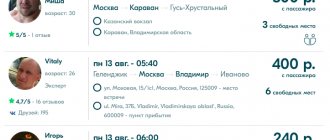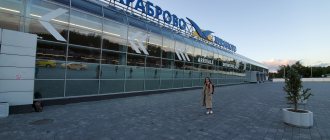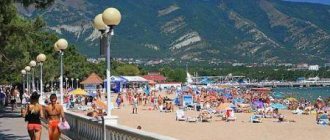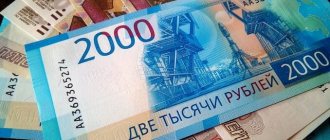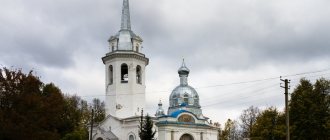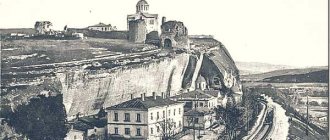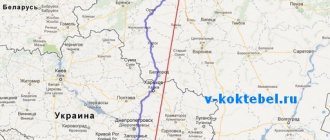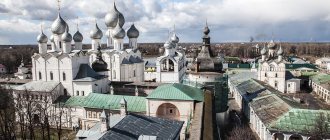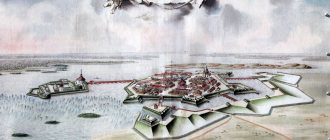| First day Second day Museums of Kolomna Stories, routes and tips from tourists with photos Where to stay in Kolomna Excursions from Kolomna for 2 days |
Kolomna is one of the most tourist settlements in the Moscow region, despite the small size of the city and the few surviving attractions. In Kolomna, both gastronomic tours and religious excursion programs are equally exciting.
Since Kolomna is located in the southeast of the region, tourists from neighboring regions often choose the city as a travel destination. People usually come to Kolomna for 1 day or for a weekend. What to see in Kolomna in 2 days? You will see the ancient Kremlin, whose area is almost as large as the Moscow one, try the famous Kolomna pastila and rolls according to old Russian recipes, and sail through the confluence of the Oka and Moskva rivers. You will also stroll through the charming and provincially quiet streets of Old Kolomna, visit unusual museums and craft shops.
On the territory of the Kolomna Kremlin Photo: © Sergey Vasilets
First day
Getting to know Yuri Dolgoruky's favorite city begins with the Kremlin. The Kolomna Kremlin was erected in the first half of the 16th century on the site of a burnt wooden fortress. For the first century of its existence, the Kremlin was used for its intended purpose - its defensive fortifications were never conquered by enemies. Later, with the expansion of the borders of the Moscow state, the Kolomna Kremlin lost its strategic purpose. The fortress walls began to collapse, and townspeople often used stone from the walls for civil buildings. The looting of the walls was stopped by the decree of Nicholas I of 1826.
Currently, the Kolomna Kremlin has been restored. The total length of the Kremlin walls in Kolomna is almost 2 km, the height of the walls ranges from 18 to 21 meters. Of the 16 towers, 7 have survived to this day. The most famous of them is the Marinka Tower, in which Marina Mnishek, the wife of False Dmitry I, was imprisoned. On an area of 24 hectares there are:
- Assumption Cathedral with a separate bell tower. The main temple of the city was founded by Dmitry Donskoy in 1379. But due to dilapidation, the original temple was dismantled in the 17th century. In the second half of the 17th century, a new cathedral was rebuilt in 10 years, and a few decades later, the inside was painted. Now the Don Icon of the Mother of God is kept in the Assumption Cathedral.
- Novoglutvinsky convent . The holy monastery on the territory of the Kremlin was founded in the 19th century. But the main temple of the monastery, Trinity Cathedral, was built much earlier - in 1705. The monastery also includes extensive bishops' chambers, inherited from the abolished Kolomna diocese.
- Church of the Resurrection . The Church of the Resurrection of the Word is one of the oldest in Kolomna. The estimated date of foundation is the 14th century. Prince Dmitry Donskoy and Princess Evdokia were married here.
- Tikhvin Church . A small temple on Cathedral Square was built in 1776 at the expense of a local merchant. Later, at the expense of another merchant, the temple was expanded and more elegantly decorated. A 17th-century hipped bell tower adjoins the church.
- Church of the Exaltation of the Cross . The temple at the Pyatnitsky Gate in the classicist style with Empire elements was erected in 1764. Under Soviet rule, a cardboard factory was located inside. Now the church is active.
- Assumption Brusensky Convent . The second holy monastery on the territory of the Kolomna Kremlin was founded in 1552 as a monastery. The monastery consists of the Holy Cross Cathedral with features of ancient Russian architecture and the tent-roofed Assumption Church, built by order of Ivan the Terrible.
- Church of St. Nicholas Gostiny . One of the oldest temples in the city. The church was built in 1514. But the temple acquired its real appearance in 1848. The main value of the church is the altar Gospel, preserved from the beginning of the 16th century.
Church of the Exaltation of the Cross Photo: © Sergey Vasilets
The heart of the Kolomna Kremlin is Cathedral Square . Also within the walls there are several museums, souvenir shops and residential buildings - ordinary people still live on the territory of the Kremlin today. Visiting the Kolomna Kremlin is free. Visits to museums and excursion programs are paid: there are both general sightseeing walks and excursions around the territories of monasteries.
More details: Kolomna Kremlin
Photo: © Igor Butyrskii
Exit the Kolomna Kremlin through the Pyatnitskaya Gate - here you can visit 2 museums: “This money is Kolomsk” (in the Pyatnitskaya Tower itself) and “Kalachnaya” . Next you should walk to the Bobrenevsky Bridge . This is a pedestrian drawbridge floating bridge across the Moscow River, which is “pushed” to the side when boats or barges pass. The Bobrenevsky Bridge does not have an opening schedule like the St. Petersburg bridges. At the landing stage you can also see a scale with flood marks and a small sculpture dedicated to a water carrier.
Photo: © Irina Dementieva
The second part of the route of the first day in Kolomna is dedicated to the main city sweet - pastila. Not a single 2-day excursion to Kolomna is complete without tasting local marshmallows. From the Bobrenevsky Bridge, move to the museum marshmallow factory , along the way examining the unusual facade of the Nikola Church on Posad with 105 kokoshniks. There are 2 marshmallow museums in Kolomna - in addition to the factory-made marshmallow museum, there is a museum of forgotten taste “Kolomenskaya marshmallow” . Both host theatrical excursions, tea parties with tastings, and souvenir shops. The only difference is the demonstration of the cooking process: in the first museum, visitors see the stages of factory production, in the second - handmade. You can end your first day in Kolomna at the “Saucer” observation deck near the Kremlin walls or by going on a river walk along the Moscow River. The pleasure boat departs on Friday evenings and twice a day on weekends along two routes: upstream with views of the Kremlin’s sights and downstream to the confluence of the Moskva and Oka rivers.
Detailed route: What to see in Kolomna in 1 day
Church of St. Nicholas on Posad Photo: © Sergey Vasilets
Tikhvin Church
The Tikhvin Church was originally built in the 18th century. A century later, it was dismantled and a new five-domed one was built in the pseudo-Russian style. From the east it adjoined the bell tower.
Tikhvin Church
The church is named after the icon of the Mother of God, painted by the Evangelist Luke, found near the city of Tikhvin. The new church had three altars: the main one, in the name of this icon, the left one - in honor of Simeon the God-Receiver and Anna the Prophetess, and the right one, dedicated to the icon of the Mother of God “Quench my sorrows”.
During Soviet times, the church was closed, the domes were demolished, and the interior was destroyed. After the church was returned to the believers, Kolomna craftsmen carried out large-scale restoration work. Divine services in the church resumed even earlier than in the Assumption Cathedral.
Second day
A route to Kolomna for 2 days, in addition to a sightseeing walk around the city, usually includes thematic excursions. These can be interactive excursions (theatrical walks through ancient streets are very popular in Kolomna) or excursions to the temples and holy monasteries of the city. Interactive excursions can be devoted to different topics: gastronomic (with tasting of Kolomna kalach, pastila and mead), military-historical (“Cossack fun” or “Russian Knights”), craft (with master classes in cooking, blacksmithing, soap making). You can explore Kolomna in 2 days from both the historical, cultural and gastronomic sides.
Museum marshmallow factory Photo: © Natalia Konnova
Staro-Bobrenov Monastery
If you do not plan to travel far outside the city, then the route can be devoted to the little-visited attractions of Kolomna and adjacent settlements. Start with the Mother of God of the Nativity Bobrenev Monastery - the most ancient holy monastery in Kolomna. It is located in the village of Staroye Bobrenevo, 3 km from the city. Presumably, the monastery was founded by Dmitry Donskoy in 1381, after returning from the Kulikovo field. But the first documentary mentions date back to the beginning of the 16th century. It is believed that in those days the monastery was also used as a defensive fortress on the approaches to Moscow. The architectural appearance of the monastery is composed of: the Cathedral of the Nativity of the Virgin Mary with a unique chapel of “singing angels” (the acoustic effect of which is that even the quiet singing of one performer is heard by a choir of voices); an octagonal bell tower with Baroque details; the abbot's corps of the 18th–19th centuries; brick walls with snow-white towers in pseudo-Gothic style.
Both tourists and pilgrims go to the Bobrenev Monastery. The second - to the miraculous icon of the Virgin Mary of Feodorov. It is believed that it helps with the conception of children and heals dangerous diseases. Visiting the monastery is free, during working hours (until 18:00).
Mother of God of the Nativity Bobrenev Monastery Photo: © Ekaterina Nefedova
Church of John the Baptist
In Gorodishche, 5 km from the Staro-Bobrenova Monastery, there is one of the most important churches in the Moscow region. The lower part of the church is considered the oldest building in the Moscow region (together with St. Nicholas Church in Kamenskoye). The exact date of construction of the temple is unknown; modern researchers suggest that it is the beginning of the 14th century. In the 16th century, the temple was rebuilt, so half the height of the walls of the quadrangle and the walls of the apses have survived to this day unchanged from the original church. At the end of the 18th century, a bell tower and a refectory connected to it were built. During the Soviet period, the temple was reconstructed and brought back to its original form. Examine the northern wall - you can see a seal on it called “The Beast of Kolomna”. There is a belief that as long as the seal is on the temple, the church will remain standing.
Panoramic view of the Church of John the Baptist
Staro-Golutvin Monastery
Staro-Golutvin Epiphany Monastery is another important holy monastery of Kolomna. It is located in the south-eastern part of the city; from the Church of John the Baptist you will need to take a taxi (the distance between the objects is 9 km). The place is very beautiful - here the Moscow River flows into the Oka. The Staro-Golutvin Monastery was also founded in the second half of the 14th century. The monastery arose as a result of the ascetic activity of Sergius of Radonezh. In the 15th century, the Staro-Golutvin Monastery played the role of a strengthening link in the defensive belt of monasteries - against the invasion of the Tatars. In the 16th century, the monastery was visited by Ivan the Terrible.
Currently, most of the buildings of the holy monastery date back to the 18th–19th centuries. This is the Epiphany Cathedral , built on the site of the old main temple; fraternal buildings and a hotel for pilgrims from the 19th century; Sergius Church , to which the rector's building is adjacent; small and large fences with towers. Currently, the monastery is active, although restoration work is still underway on the territory.
Details: Staro-Golutvin Epiphany Monastery
Staro-Golutvin Monastery Photo: © Maria Chakhnashvili
Church of the Life-Giving Trinity
On the opposite bank from the Staro-Golutvin Monastery is the Trinity Church . The temple stands out for its elegant appearance. It was built at the turn of the 19th and 20th centuries in the neo-Byzantine style. The first mention of the temple was in 1775. Then the Trinity Church in Shchurovo was wooden. A stone temple replaced a dilapidated wooden one. On the territory of the temple (it is now operational) there is a small zoo with domestic animals.
Panoramic view of the Church of the Life-Giving Trinity
Peace Park
Return to the city center along October Revolution Street and in the area of Kalinin Street turn towards Peace Park . It is called the “green miracle of the city.” The green oasis occupies 30 hectares. There are attractions, a swimming pool with boats, an artificial river and food outlets here. But the main attraction is the huge fountain . It was erected in the 60s during the reconstruction of the park. The fountain is a 36-meter bowl with 50 different jets (vertical and inclined). In the evening, the fountain is illuminated - and the lighting has been preserved from Soviet times. After Peace Park, you can go for a walk through the quarters of Old Kolomna.
the Gorki Zoo with children . This is a petting zoo in the village of Gorki near Kolomna. Based on a farm, Gorki became the first outdoor petting zoo in the Moscow region. Here children and adults can feed and pet African and Australian ostriches, buffalos and yaks, sika deer and llamas, raccoons and nutrias, pygmy pigs and goats. Unlike other petting zoos, in Gorki the animals are kept in spacious enclosures, and in the summer - in the open air.
Overview of all the sights of Kolomna
Photo: © Katerina Solosyatova
What to see if you come with a child
Some children do not like “museum” walks. To entertain an inquisitive child, you can visit the following attractions:
- skating palace;
- wall with drawings;
- marshmallow factory;
- "Giant roller coaster"
Skating Palace "Kolomna"
The Kolomna Skating Palace is a sports complex that is one of the most popular Russian skating rinks. It was opened in 2006. It was in this palace that the Ice Age show was filmed. Both children and parents will be interested in visiting one of the ice shows, and the most active guests can go ice skating (singlely or as part of a group). Tickets cost from 100 rubles (children under 10 years old are free).
The ice palace has other areas (boxing ring, tennis court, fitness room, etc.)
The Kolomna Palace is located at the address: Naberezhnaya Kolomenki Street, 7.
Wall with drawings
All children love color pictures. In Kolomna there is a wall (the fence of an ordinary car repair shop) decorated with humorous graffiti. No other city in Russia has such a “street” attraction. The fact is that both the sayings and the drawings themselves are dedicated only to the Kolomna residents. This way, city guests can get to know the culture of Kolomna better.
It is not known who decorated this wall and in what year, but the authorities are not removing it, which means the wall deserves attention.
Each drawing on the wall is dedicated to Kolomna residents
A wall with drawings can be found on Zaitseva Street (not far from the pontoon bridge).
Pastila Factory
The pastila factory in Kolomna is a small factory for the production of sweets, opened in 1852. The object belonged to the merchant Karp Chuprikov. The factory is also called a museum of vanished taste, although it only became a museum in 2011. In addition to the fact that you can buy rare sweets here, guests are offered other services:
- master classes on making confectionery products;
- theatrical performances throughout the year;
- tours of the factory with the history of its origin;
- free coffee and Wi-Fi;
- visit to the “Garden of Kolomna Pastilnitsa”, etc.
The factory will be interesting for both children and their parents. However, the visit must be agreed upon in advance and paid for (tickets cost from 200 rubles). Information about ordering a ticket can be obtained on the official website of the enterprise (https://kolomnapastila.com). Museum factory opening hours: daily from 10 am to 8 pm. Factory address: Polyanskaya street, 4.
Video: story about the marshmallow factory in Kolomna
A complex of giant wooden slides and swings
A complex of giant slides can be an interesting entertainment for a child and his parents. This facility was built in 2008, its elements were used to host the European Winter Sports Championships. The championship passed, but they decided to leave the wooden slides and swings, because this is not only a playground, but also a large-scale art object. By the way, various city events are held on the territory of the complex (especially often in winter). You can come to the slides at any time and completely free of charge; the area is not fenced in anything. The complex is located on Levshina Street (city center).
The complex of giant slides and swings are wooden buildings for sports and entertainment purposes.
Museums of Kolomna
2 days for Kolomna is enough time to not only visually explore the city, but also visit several museums. Numerous museums in Kolomna are dedicated to ancient Russian crafts, gastronomic specialties and the history of the city. Most museums have small exhibitions. In a short visit you can visit 2–5 museums.
Start your acquaintance with the Kolomna Local Lore Museum . Initially, the museum was opened in the Marinka Tower of the Kolomna Kremlin, and later moved to a merchant mansion of the 19th century. The permanent exhibition is located on 2 floors of the estate. On the ground floor there is the exhibition “Nature and Man in the Kolomna Territory”. The exhibition features archaeological finds from Kolomna land, reconstructions of historical buildings, and stuffed animals. On the second floor there is an exhibition “The Fate of the City - the Fate of Russia”, dedicated to the history of Kolomna from the princely period to the 20th century. The museum's collection includes crafts from the medieval period, household items and clothing of past centuries, historical documents.
Museum of Local Lore Photo: © Maxim Ershov
You can continue studying the history of Kolomna of past centuries in the cultural museum. Inside the historical estate, the interiors of dwellings of different classes are presented - from a peasant hut to a merchant's house. Another museum located in a merchant estate of the 19th century is “Secrets of Kolomna mead” . Here visitors will go down into a cellar designed for storing honey and intoxicating drinks made from it. In Rus', such cellars were present in almost every merchant estate and were called “medovushi”. The theatrical excursion (led by a beekeeper, a mead maker and a housekeeper) includes a story about the history of mead making, ancient Russian rituals associated with honey, as well as a master class on preparing honey sbiten.
Estate of the Lazhechnikov merchants Photo: © Maxim Ershov
The most interesting museums in Kolomna are small museums dedicated to highly specialized topics. the museum of origins “This money is Kolomsk” located in the Pyatnitskaya Tower . The exhibition is dedicated to various payment methods in Rus'. Coins and banknotes from various historical periods are exhibited here. The Kuznechnaya Sloboda Museum exhibits handicrafts created by blacksmiths. Of particular value is the collection of weapons and armor of warriors of the pre-Mongol period. The House of Samovar Museum displays a private collection of samovars - more than 400 exhibits in total. Among them: antique samples from Central Asia and the Far East, mass-produced Soviet samovars, tiny devices for one mug of tea and camping flat versions. Also in the museum you can see a traditional Russian stove and dress up in ancient clothes.
Pyatnitskaya Tower Photo: © Sergey Vasilets
With children it is worth visiting the museum of your favorite toy . The museum's exposition will also appeal to adults, as it looks very nostalgic: teddy bears, vintage porcelain dolls, toy characters from Soviet cartoons and plastic soldiers. The owner of the museum conducts master classes. Fans of avant-garde art should definitely visit the Museum of Organic Culture . The basis of the collection is a collection of works by the founder of this art movement, Mikhail Matyushin, and his colleagues: Vladimir Sterligov and Elena Guro.
Detailed material: Museums of Kolomna
Museum of your favorite toy Photo: © Svetlana Sarycheva
Bobrenev Monastery of the Nativity of the Virgin Mary
This monastery is located in the village of Staroye Bobrenevo adjacent to Kolomna on the other bank of the Moscow River. Its panorama is clearly visible from the Kremlin Cathedral Square.
Bobrenev Monastery of the Nativity of the Virgin Mary
The monastery was built by Dmitry Donskoy as gratitude to the Mother of God for the victory in the Battle of Kulikovo. In the 18th century The monastery lost its independence and became part of Novoglutvin. In the next century, the blue and white Feodorovskaya Church was built on the territory of the monastery. It houses the famous icon of the same name of the Mother of God, which was considered the patroness of the Romanov royal dynasty. (That is why, when adopting Orthodoxy, non-Russian wives of autocrats received the patronymic “Feodorovna.”)
There are two main churches in the monastery - the Nativity of the Virgin Mary (in the background) and Feodorovskaya. The acoustics of the Church of the Nativity of the Virgin Mary is unique: it creates the illusion of polyphonic singing.
The monastery is free to visit: donations are welcome.
Stories, routes and tips from tourists with photos
What attractions are worth seeing in 2 days in Kolomna, and what don’t you need to waste time on? The answer to this question can be found in the reviews of tourists. Travelers describe their routes, share photographs of Kolomna in different seasons and their impressions of the city. In the reports you will find ready-made options for walks around the city - from introductory to thematic, as well as tips on how to explore Kolomna and the surrounding area in 2 days.
- A series of stories from Maria Penina: “When the soul demands something sweet! For marshmallows in Kolomna (First impression)”, “When the soul demands something sweet! For marshmallows in Kolomna (part II)”, “When the soul demands something sweet! For marshmallows in Kolomna (part III).”
- Photo album “Weekend near Moscow” from Julia.
- The story “Kolomna in early spring” from Elena E.
All tourist reviews about trips to Kolomna
Residential building on the territory of the Kolomna Kremlin Photo: © Irina Dementieva
Novogolutvin Holy Trinity Monastery
On the territory of the current monastery since the 14th century. Kolomna diocese was located. It included the Bishop's House and Corps, the Trinity Church and the Theological Seminary. At the very end of the 18th century. By imperial decree the diocese was abolished. Church authorities promptly transferred the monks of the Epiphany Golutvinsky Monastery to the vacated premises in order to preserve these structures for the church. From this moment on, the Kremlin Holy Trinity Monastery began to be called Novogolutvin, and the city Epiphany - Starogolutvin.
By the middle of the 19th century. New churches and a 55-meter yellow bell tower appeared on the territory of the monastery. During Soviet times, the monastery was closed, but in 1977 its premises began to be restored. A decade later, the monastery was returned to the Russian Orthodox Church, but it became a women's monastery.
The main building of the monastery is the Church of the Holy Trinity in the Russian Baroque style. Elegant windows decorated with crimson trim stand out on the white stone walls. In the background of the photo you can see the top of a beautiful light yellow bell tower.
Novogolutvin Holy Trinity Monastery
The nuns created the mosaic floors and mahogany iconostasis with their own hands. Thanks to the efforts of restorers who removed 12 layers of paint, beautiful 19th-century painting can once again be seen on the walls and ceiling.
In 1990, in the basement of the Trinity Church, a new church was consecrated in honor of Blessed Xenia of St. Petersburg. The church is famous for its unusual ceramic iconostasis made by the nuns.
Now over 80 nuns and nuns live in the monastery, and not only from Russia. They lead a fairly active lifestyle. The monastery has an Orthodox medical center with nun doctors, as well as a dog kennel where rare Mongol-Buryat dogs and Central Asian shepherd dogs are bred and kept. The nuns embroider and work in icon painting, ceramics and carpentry workshops. The church choir travels to services in other churches in Russia, and even beyond its borders.
Address: st. Lazareva, 11A.
Where to stay in Kolomna
Ancient Kolomna is full of impressions, and the lingering guest will need accommodation. Due to the tourist attractiveness of the city, there is no shortage of it: a guest can choose from about a hundred hotels and apartments of different price levels and attractiveness.
With voluminous diversity, unusual ones often stand out. Thus, within walking distance from the Kolomna Kremlin there is “Camping near the Kremlin” - cute houses are especially convenient for those arriving by car. If you arrive on a yacht or want to admire the Oka River, the 40th Meridian Yacht Club awaits you. “Historical Mansion 1825” offers decorous service and comfort, and “Aerograd” offers the opportunity to add extreme sports to your cultural holiday by organizing parachute jumping, paintball and volleyball.
- Kolomna Hotels
- Hostels for Budget Travelers
- Flats and apartments
When booking accommodation on Booking.com, cashback is available: Cashback promotion for Tourist. RU
Photo: © Sergey Vasilets
Monument to Dmitry Donskoy
The monument to Dmitry Donskoy is located near the walls of the ancient Kremlin. It was from here in 1380 that the prince's troops set out for the legendary battle on the Kulikovo Field.
This monument is the only monument depicting Dmitry Donskoy on horseback. Its height together with the pedestal is more than 12 m. The popular landmark has become a symbol of the city since the installation of the monument in the mid-20th century.
up
Excursions from Kolomna for 2 days
People come from Moscow to Kolomna for 2 days to see not only the city itself, but also other settlements of the Moscow region. Kolomna is often chosen as a transit point for traveling around the Moscow region and neighboring regions. A 2-day tour to Kolomna usually includes trips around the surrounding area. Where to go from Kolomna? Some of the most popular routes are Zaraysk-Serpukhov or Bronnitsy-Zaraisk. In Zaraysk, as in Kolomna, an ancient Kremlin . In Serpukhov, it is worth visiting Vysotsky Monastery and a small Kremlin . Tourists come to Bronnitsy to see the famous Cathedral complex and stroll along the streets with charming wooden buildings.
You can go on a gastronomic tour from Kolomna for 2 days. This can be either an independent trip to local farms or an organized tour. Typically, the gastronomic program includes: a snail agricultural farm, an eco-farm in Yegoryevsk with homemade cheeses, the Schwarzkaiser brewery, the family estate of Alexander Blok in Shakhmatovo with lunch according to ancient recipes of the 19th century, an ostrich farm in Zvenigorod.
For 2 days you can leave Kolomna for the Ryazan region. Here tourists, first of all, visit the village of Konstantinovo with the Sergei Yesenin Museum-Reserve . In Ryazan itself you need to visit the local Kremlin and visit the Boris and Gleb Cathedral . A literary trip can also be arranged in the Tula region - there is the estate of Leo Nikolaevich Tolstoy . The Kaluga and Vladimir regions are also suitable for traveling for 2 days from Kolomna - both regions are 2–2.5 hours away.
Kremlin in Zaraysk Photo: © kasheev
Brusensky Assumption Monastery
The foundation of the monastery dates back to 1552, and is associated with the third campaign of Ivan the Terrible against Kazan. It is assumed that the king founded the monastery upon his return from a successful campaign. Initially, most of its buildings were made of wooden beams, so the monastery began to be called “timbered” or “Brusensky”. The first inhabitants of the original monastery were some participants in the victorious Kazan campaign.
Brusensky Assumption Monastery
During the Time of Troubles, the monastery experienced a decline. After the Time of Troubles, the monastery became a convent. Among the nuns there were also persons from noble families. After the abolition of the Kolomna diocese, the Brusensky Assumption Monastery was assigned to the Assumption Tula Monastery, and even the abbess and nuns were moved there. Then, at the request of the Kolomna residents, the Holy Synod reversed its decision.
The heyday of the monastery was the 19th century. During Soviet times, the monastery was closed. Its buildings suffered significant damage, and the nuns were expelled or repressed. Fortunately, large-scale restoration work has returned it to almost its original appearance.
The main building of the monastery is the five-domed Holy Cross Cathedral, erected in the mid-19th century. It became an adornment not only of the monastery, but of the entire Kremlin. White stone carved details stand out on the red brick walls of its façade.
The main relic of the Brusensky Monastery was a copy of the Kazan Icon of the Mother of God, lost in Soviet times. The list has now been recreated based on a copy found in the archives.
Address: Brusensky lane, 36.
Memorial Park
The memorial park was built in the center of Kolomna in the 70s. It was built on the site where soldiers were buried en masse during the Great Patriotic War.
Memorial Park
It should be noted that this place served as a cemetery under Catherine II. Now the Eternal Flame burns in the park, there are memorial statues, and in honor of the 65th anniversary of the Victory, the Museum of Military Glory was opened.
- Where is it: October Revolution Street.
- Opening hours: 24 hours a day.
- Cost of visiting: free.
Cultural
The opening of this center was a gift to the city in honor of the 600th anniversary of the Battle of Kulikovo. It is located in an 18th-century estate, which is classified as a monument of classicism. The center constantly hosts various exhibitions and concerts. Most of them are dedicated to one or another type of art: graphics, painting, sculpture.
Cultural
- Where is it: Krasnogvardeyskaya st., 2.
- Opening hours: daily from 10:00 to 18:00.
- Cost of visiting: 150 rubles.
